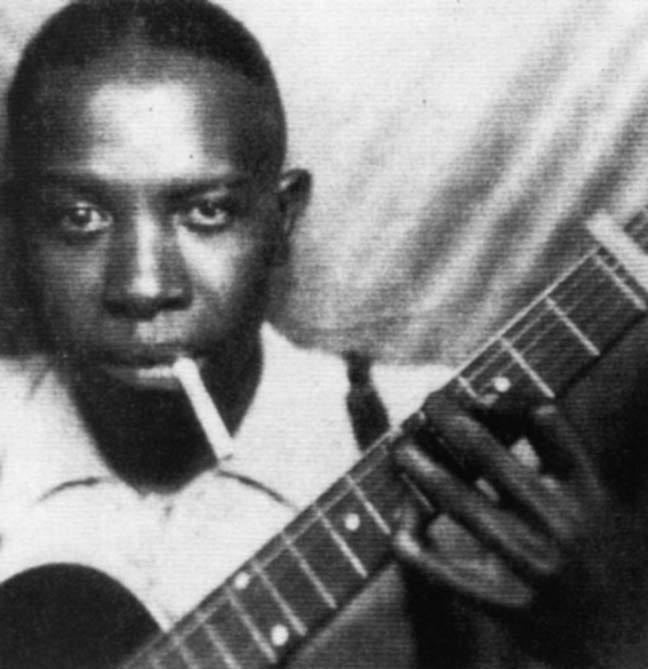Mike Selby
"The images — the wanderer's voice and its echoes, the mocking wind running through the guitar strings, and the implacable, slow, pursuing footsteps — are full of evil, surcharged with the terror of one alone among the moving, unseen shapes of the night."
So wrote noted musicologist Rudi Blesh in his 1946 book 'Shining Trumpets: A History of Jazz.' The book was a wealth of historic information for fans of this style of music. Although reviewed as "flawed and biased," and nowhere near as good as other books on the subject, 'Shining Trumpets' would forever change music in the later half of the 20th century, with nothing more than the above quote.
In one of the shortest entries in the book, Blesh is describing 'Hellhound On My Trail' — an unknown song by an unknown artist named Robert Johnson. At the time, all Blesh knew about Johnson was the handful of recordings he had made in 1936, with 'Hellhound' being one of them. The scratchy recording Blesh heard was unique enough to earn a mention in his book, but nothing more. He didn't include any biographical details of the performer, as he didn't know of any. No one did. In fact this was the first mention of Robert Johnson in print.
Any of Blesh's readers lucky enough to find a copy of 'Hellhound' to listen to found themselves transfixed by the absolute mastery of Johnson's guitar playing; simultaneously haunted by the pain in his voice. Johnson's songs almost sounded supernatural, causing a small exodus of academics, journalists, record producers and jazz aficionados to the rural parts of the American South.
No one was prepared for what was (and what wasn't) found.
What was found was the notion that in the late 1920s, Robert Johnson went to the crossroads of his home town (Hazelhurst, Mississippi), and sold his soul to the devil in exchange for musical genius. All this seemed to make sense to all those who told it. Many people witnessed Johnson die at age 27, crawling across a nightclub floor writhing in tremendous pain. The devil was dragging him to hell. The undeniable blood-chilling recordings made of his tortured-soul of a voice only added credence to this much believed explanation.
What really happened and who Robert Johnson really was has been extraordinarily difficult to pin down. Part of the trouble researchers have had was the fact that the name Robert Johnson is almost as common as John Smith. Whole articles, liner-notes, and even books have been published about the wrong Robert Johnson. The 'real' Robert Johnson also grew up with a rotating series of fathers, and he went by eight different last names during his short life.
Although not as cool as the devil story, Johnson's death was the result of being poisoned by a jealous husband (like many touring musicians, Johnson "liked the ladies"). The crossroads legend was further deflated when a Southern reporter (ingeniously working as an exterminator to get access to people's homes) found testimony that Robert Johnson had indeed gone to the crossroads that night, but instead of his soul he traded a pair of shoes for some guitar lessons.
(The crossroads are still there in Hazelhurst, where North Ragsdale Avenue and East Conway Street cross each other. Their Chamber of Commerce is happy to direct tourists there).
The style of blues found in 'Hellhound On My Trail' and his other songs was incredibly original. They followed an unusual A/A/B rhythm, which (instead of dying with him) appeared again in a 1956 song titled 'Hound Dog.' The folk revival of the '60s saw the commercial release of Johnson's recordings, which caused Bob Dylan, Keith Richards, and Jimmy Page to change their style of playing guitar. It is a sobering fact that without Blesh's book, rock and roll (I know, the devil's music), might not have come to pass. "His music," said Eric Clapton, "remains the most powerful cry that I think you can find in the human voice."
Mike Selby is Reference Librarian at the Cranbrook Library
